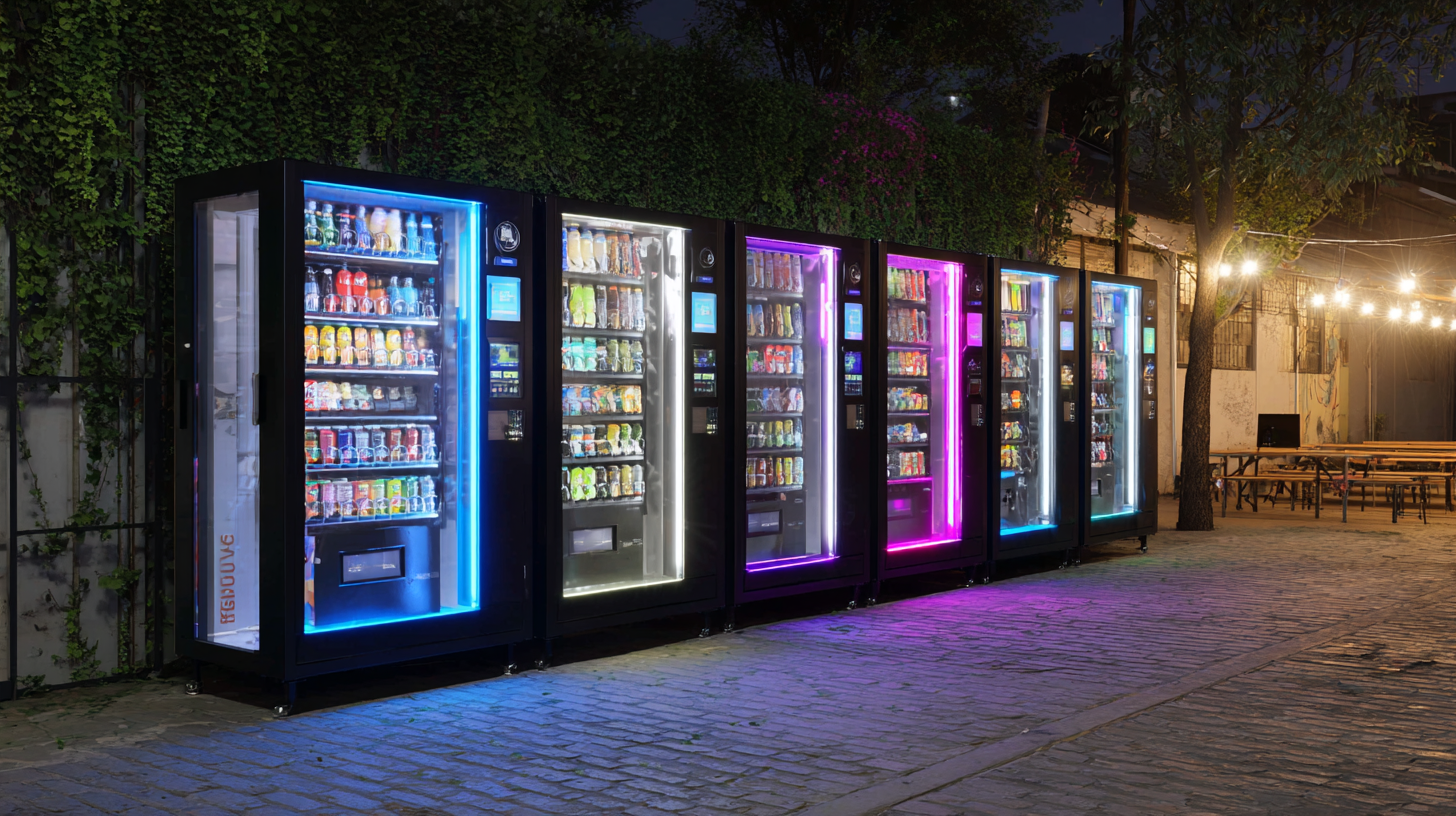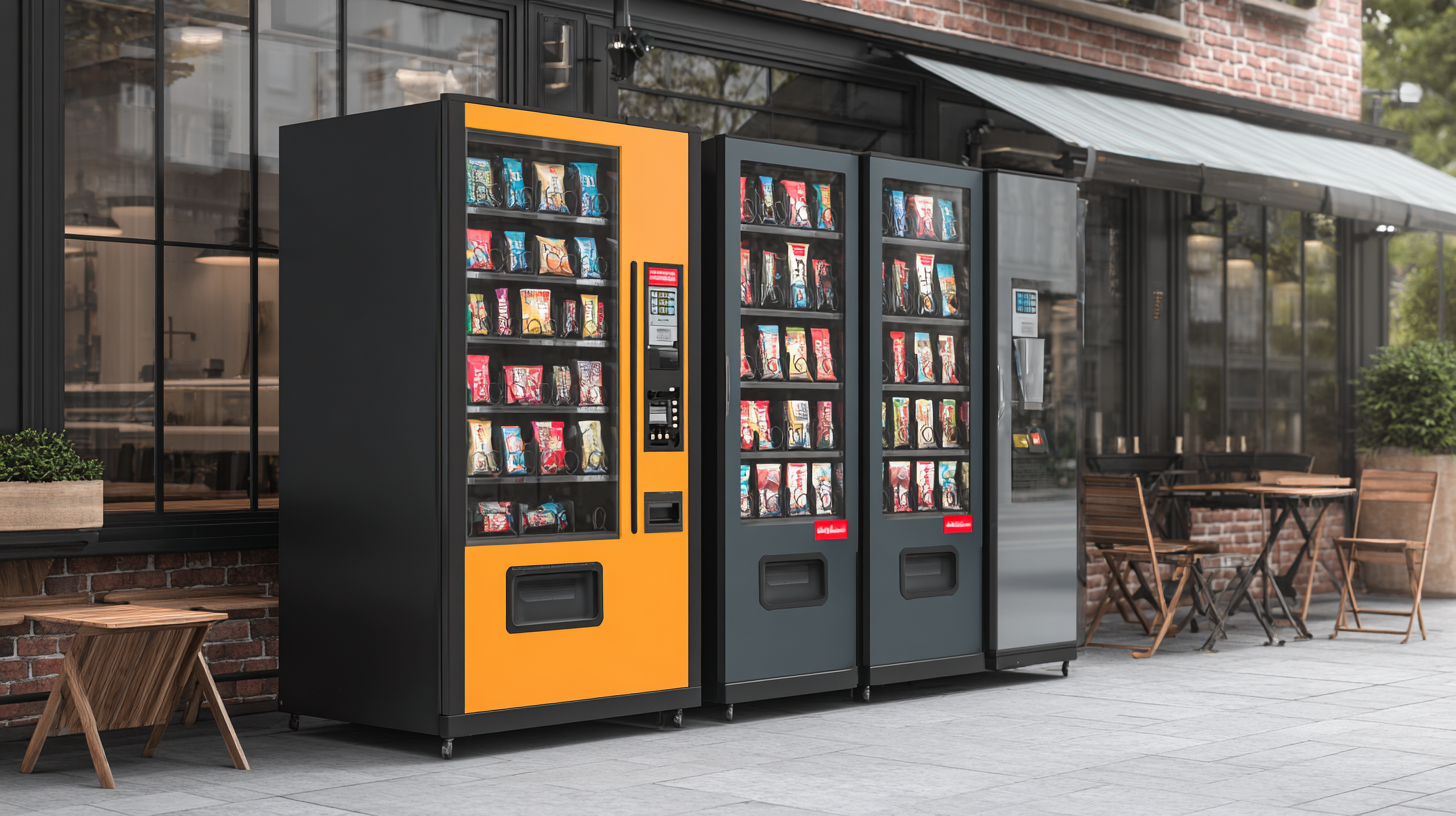Navigating the 2025 Tech Trends in Outdoor Vending Machines and How to Enhance Your Business
As the landscape of outdoor vending machines continues to evolve, staying ahead of the curve in 2025 will be crucial for businesses looking to enhance their operations. According to a recent report by IBISWorld, the vending machine industry is projected to reach a market size of $26 billion by 2027, driven by technological advancements and changing consumer preferences. The integration of digital solutions within outdoor vending machines is transforming the customer experience, enabling contactless payments, real-time inventory tracking, and personalized product offerings. Furthermore, a study by Grand View Research highlights that the adoption of smart vending machines is expected to grow at a CAGR of 14.8% from 2021 to 2028. This blog will delve into the key tech trends shaping the future of outdoor vending machines and provide actionable insights on how businesses can leverage these developments to boost sales and improve customer engagement.

Emerging Technological Innovations in Outdoor Vending Machines for 2025
The outdoor vending machine industry is poised for significant transformation in 2025, driven by emerging technological innovations that cater to evolving consumer preferences and improve operational efficiency. According to a recent report by Frost & Sullivan, the global vending machine market is expected to reach $25 billion by 2026, with outdoor vending operations increasingly relying on smart technology to enhance user experience. Advances such as cashless payment systems, touchless interfaces, and IoT connectivity are setting a new standard for convenience and safety, particularly in outdoor environments.
Moreover, the integration of artificial intelligence (AI) and machine learning is revolutionizing inventory management for outdoor vending machines. A study from MarketsandMarkets reveals that AI in retail is projected to grow at a compound annual growth rate (CAGR) of 35% from 2021 to 2026. These technologies enable machines to analyze purchasing patterns and adjust stock levels in real-time, ensuring that popular items are always available. Additionally, the incorporation of eco-friendly vending solutions aligns with the increasing consumer demand for sustainability, with a growing number of operators adopting energy-efficient machines and biodegradable packaging. As we head into 2025, these innovations will not only enhance operational effectiveness but also attract a tech-savvy consumer base looking for convenience on the go.
Enhancing Customer Experience through Smart Payment Solutions
As we approach 2025, the outdoor vending machine landscape is set to undergo significant transformations, particularly with the integration of smart payment solutions that enhance customer experience. The North American intelligent vending machine market, currently valued at USD 8.01 billion, is projected to surge to USD 23.81 billion by 2033, indicating a robust demand for advanced vending technologies. This growth is largely driven by innovations such as contactless payment systems and mobile wallets, which cater to the evolving preferences of consumers who seek speed and convenience.
Furthermore, industries are witnessing a shift in payment methodologies, such as the increasing adoption of SoftPOS technology, enabling businesses to accept payments through smart devices. This trend mirrors the advancements seen in other sectors, where seamless payment processes foster greater customer satisfaction and loyalty. For instance, Worldline's Smart Engage platform is redefining customer interaction by facilitating personalized payment experiences that adapt to consumer behavior.
As outdoor vending machine operators look to enhance their offerings, incorporating these smart payment solutions is crucial. The ability to provide a frictionless transaction experience not only meets modern consumer expectations but also positions businesses to thrive in an increasingly competitive market. Embracing these innovations in payment technology will ultimately lead to improved operational efficiencies and elevated customer engagement.
Leveraging Data Analytics to Optimize Inventory Management
As the outdoor vending machine market evolves, leveraging data analytics has become crucial for optimizing inventory management. According to a recent report by Technavio, the global vending machine market is expected to grow by $1.5 billion from 2022 to 2026, fueled by a rise in consumer demand for convenience. With such rapid growth, businesses must adopt data-driven strategies to stay competitive. By utilizing inventory tracking software, operators can gain real-time insights into product performance, allowing them to adjust stock levels based on demand patterns.

Tip 1: Implement a data analytics platform that integrates with your vending machines to monitor sales trends. This will help you identify which products are popular and which ones are underperforming, enabling you to make informed decisions about restocking.
Moreover, predictive analytics can further enhance inventory management by forecasting customer preferences and demand fluctuations. A study from Gartner indicates that 75% of organizations utilizing advanced analytics saw improved operational efficiency. By analyzing historical data, vending machine operators can predict peak times and adjust their inventory accordingly, minimizing waste and maximizing profits.
Tip 2: Regularly analyze customer purchasing data to anticipate seasonal trends. This proactive approach will help you optimize your inventory for different times of the year, ensuring that you always meet customer demand.
Engaging with data analytics not only streamlines inventory management but also enhances the overall customer experience, positioning businesses for growth in the dynamic outdoor vending machine sector.
Sustainability Practices in Outdoor Vending Operations
 Sustainability has become a cornerstone of modern business practices, and outdoor vending operations are no exception. As consumers increasingly prioritize eco-friendly options, vending machine operators can enhance their appeal by integrating sustainable practices into their business model. This includes using energy-efficient machines that reduce power consumption and opting for biodegradable or recyclable packaging for products. Additionally, sourcing local and organic products not only supports local economies but also minimizes carbon footprints associated with transportation.
Sustainability has become a cornerstone of modern business practices, and outdoor vending operations are no exception. As consumers increasingly prioritize eco-friendly options, vending machine operators can enhance their appeal by integrating sustainable practices into their business model. This includes using energy-efficient machines that reduce power consumption and opting for biodegradable or recyclable packaging for products. Additionally, sourcing local and organic products not only supports local economies but also minimizes carbon footprints associated with transportation.
Moreover, implementing a comprehensive waste management strategy is crucial for promoting sustainability. Operators can provide clearly labeled recycling and composting bins alongside vending machines, encouraging consumers to dispose of waste responsibly. Furthermore, utilizing digital signage for promotions can lessen paper waste while providing an interactive experience for customers. By embracing these sustainability practices, businesses not only contribute positively to the environment but also attract a more conscious consumer base, positioning themselves as leaders in the evolving marketplace of outdoor vending.
Marketing Strategies to Drive Engagement with Tech-Savvy Consumers
In today's rapidly evolving marketplace, engaging tech-savvy consumers is crucial for the success of outdoor vending machines. One effective marketing strategy is to leverage social media platforms to create a buzz around your machines. Utilizing eye-catching visuals and videos showcasing the unique features of your vending machines can attract attention. Collaborating with influencers who resonate with your target demographic can amplify your reach, allowing you to tap into their established audiences. Engaging content that highlights user experiences and reviews can also encourage potential customers to interact with your brand.
Another key strategy involves incorporating mobile technology to facilitate a seamless purchasing experience. Offering a mobile app or integrating contactless payment options can significantly enhance consumer engagement. Incentivize users to download your app with loyalty programs or special discounts exclusive to app users. Furthermore, utilizing data analytics from mobile interactions can help tailor your offerings to meet the specific preferences of your customers, ensuring a personalized experience that keeps them coming back. By adopting these strategies, businesses can not only enhance consumer engagement but also establish a strong presence in the competitive landscape of outdoor vending machines.
Navigating the 2025 Tech Trends in Outdoor Vending Machines and How to Enhance Your Business
| Trend | Description | Impact on Business | Marketing Strategy |
|---|---|---|---|
| Contactless Payments | Integration of mobile wallets and tap payment options. | Boosts sales by providing convenience and speed. | Promote QR codes through social media to encourage use. |
| Smart Inventory Management | Using IoT for real-time stock monitoring and replenishment. | Reduces waste and keeps popular items stocked. | Share inventory stats with customers to build trust. |
| Eco-Friendly Options | Offering sustainable products and recyclable packaging. | Attracts environmentally conscious consumers. | Highlight sustainability initiatives in advertising. |
| Personalization through AI | Utilizing AI to recommend products to consumers. | Enhances user experience, increasing sales. | Use targeted ads based on consumer data analysis. |
| Enhanced User Experience | Touchless interfaces and improved user interface design. | Increases customer satisfaction and repeat purchases. | Engage users through surveys for feedback on UX. |
